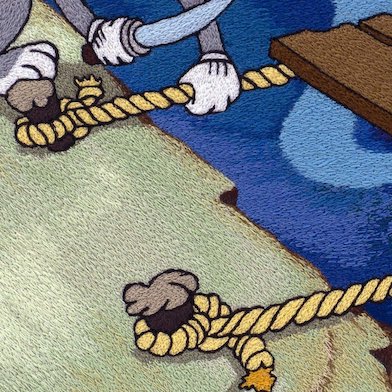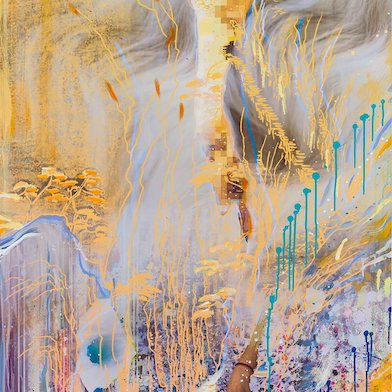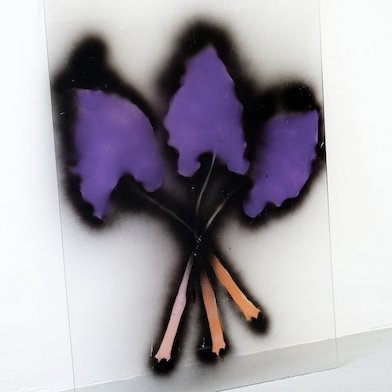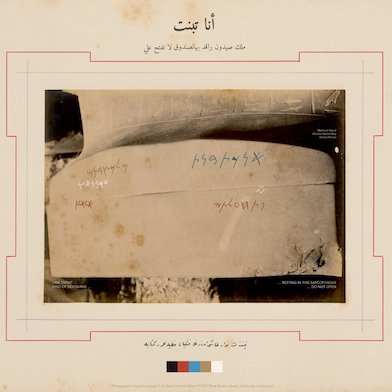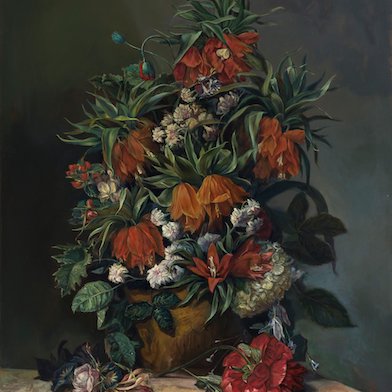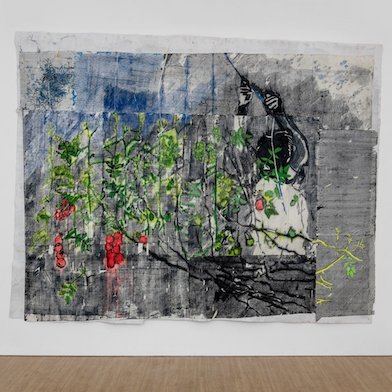Open: Wed-Sun 12-6pm
Visit
Sislej Xhafa: bride on soil
Galleria Continua Les Moulins, Boissy-le-Châtel
Sun 18 Sep 2022 to Sun 14 May 2023
46 rue de la Ferté Gaucher, 77169 Sislej Xhafa: bride on soil
Wed-Sun 12-6pm
Artist: Sislej Xhafa
version française ici
Galleria Continua presents the third exhibition of Sislej Xhafa at GALLERIA CONTINUA / Les Moulins, celebrating the fifteenth anniversary of the gallery.
Installation Views
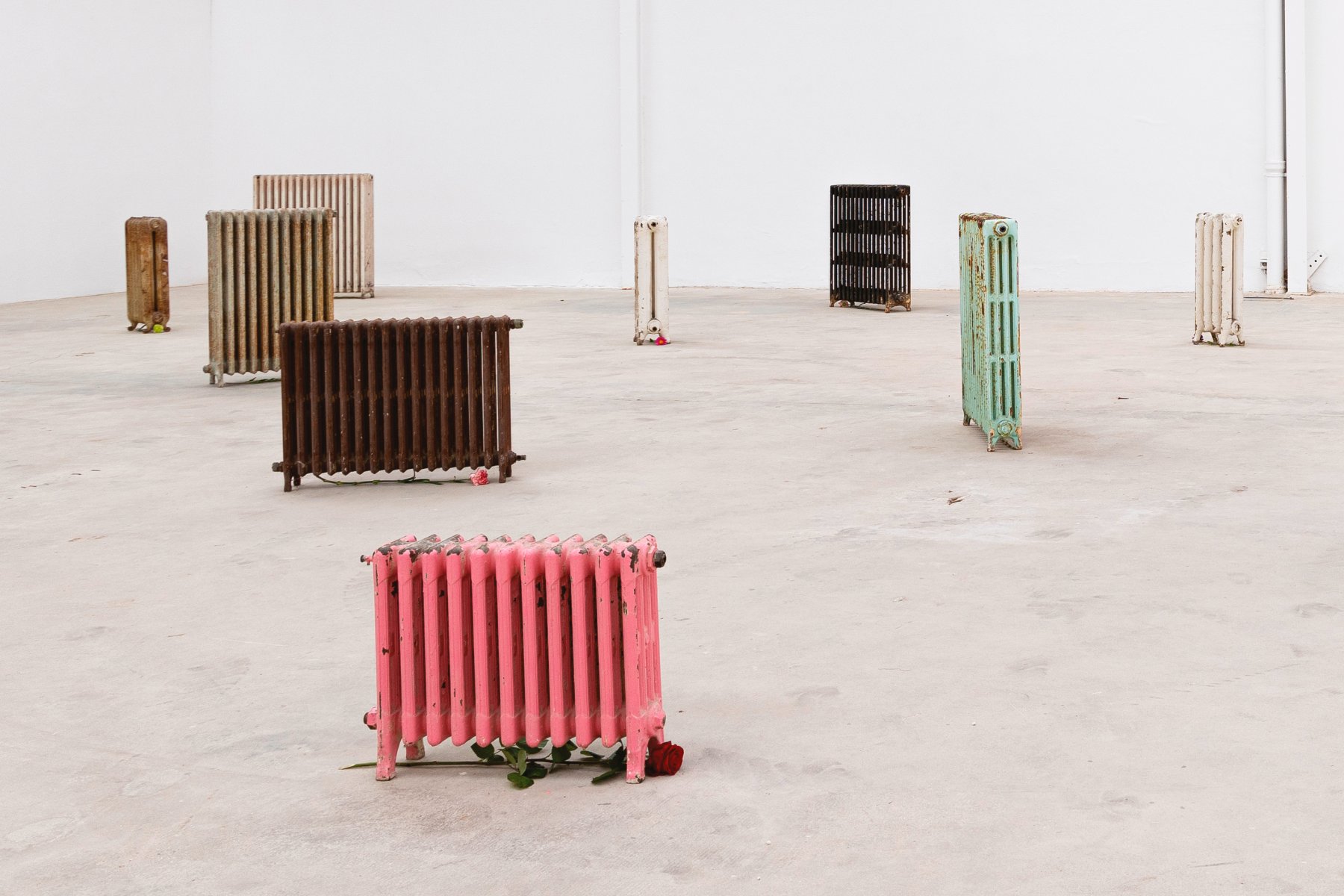
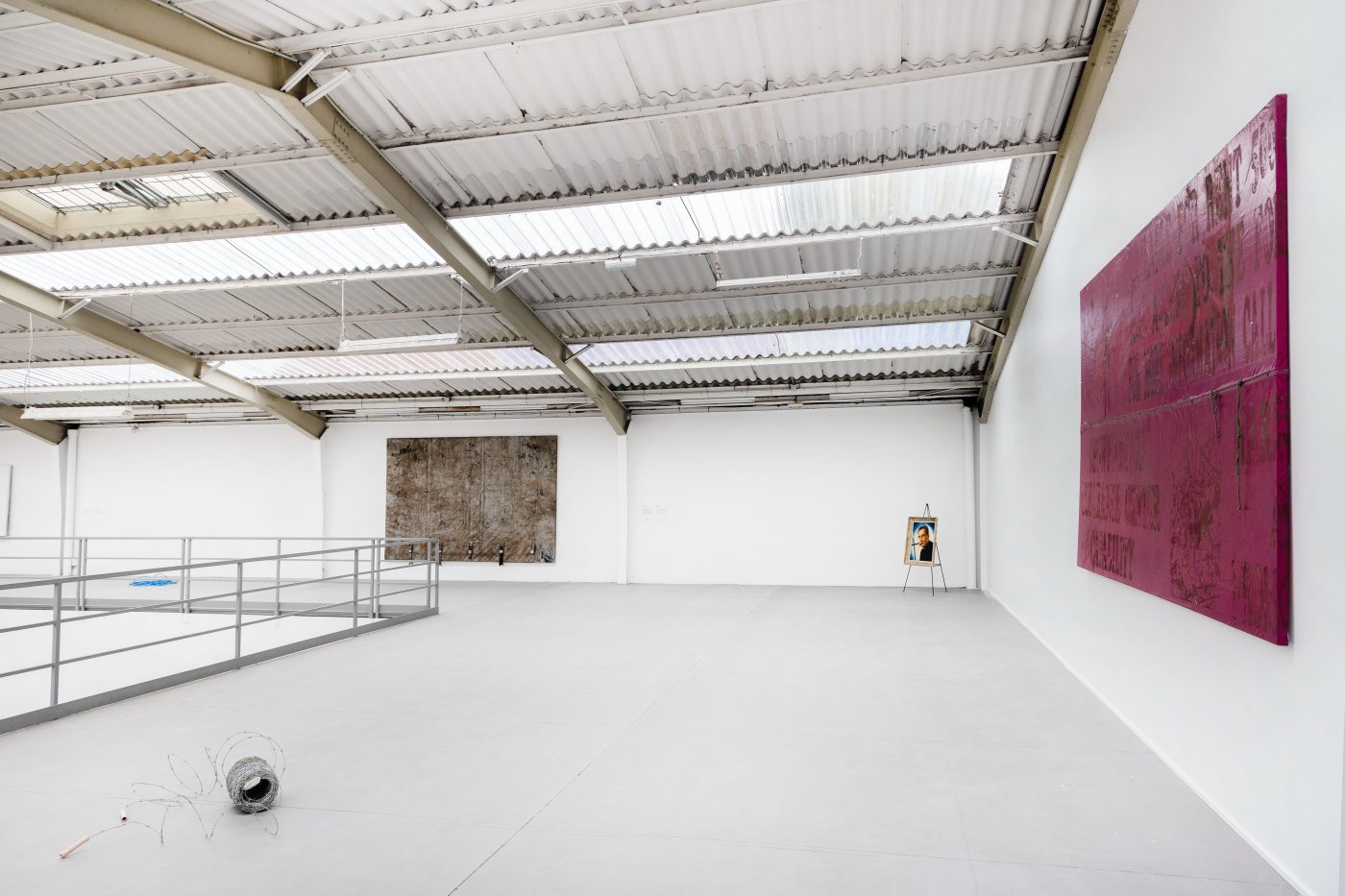
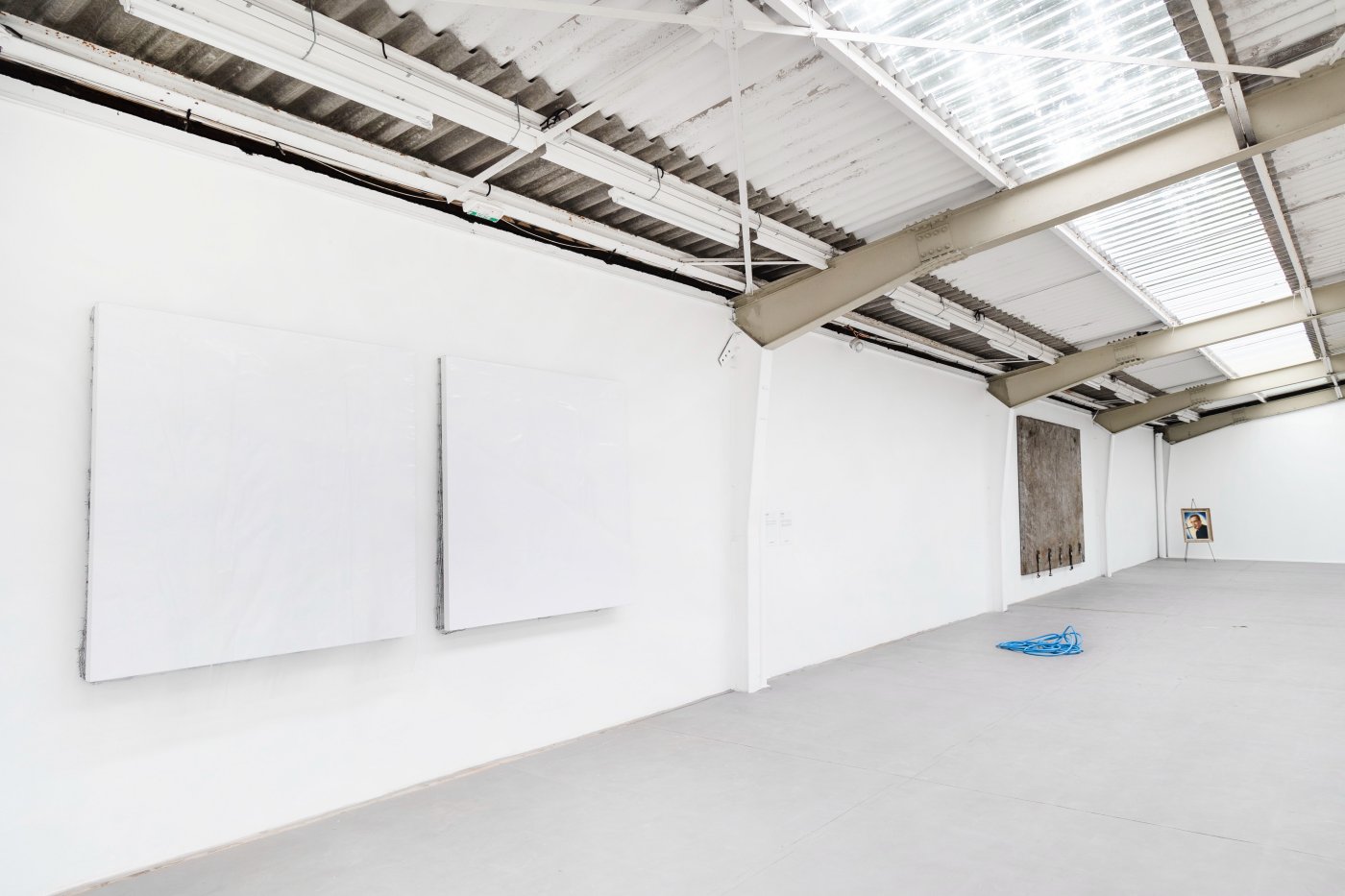
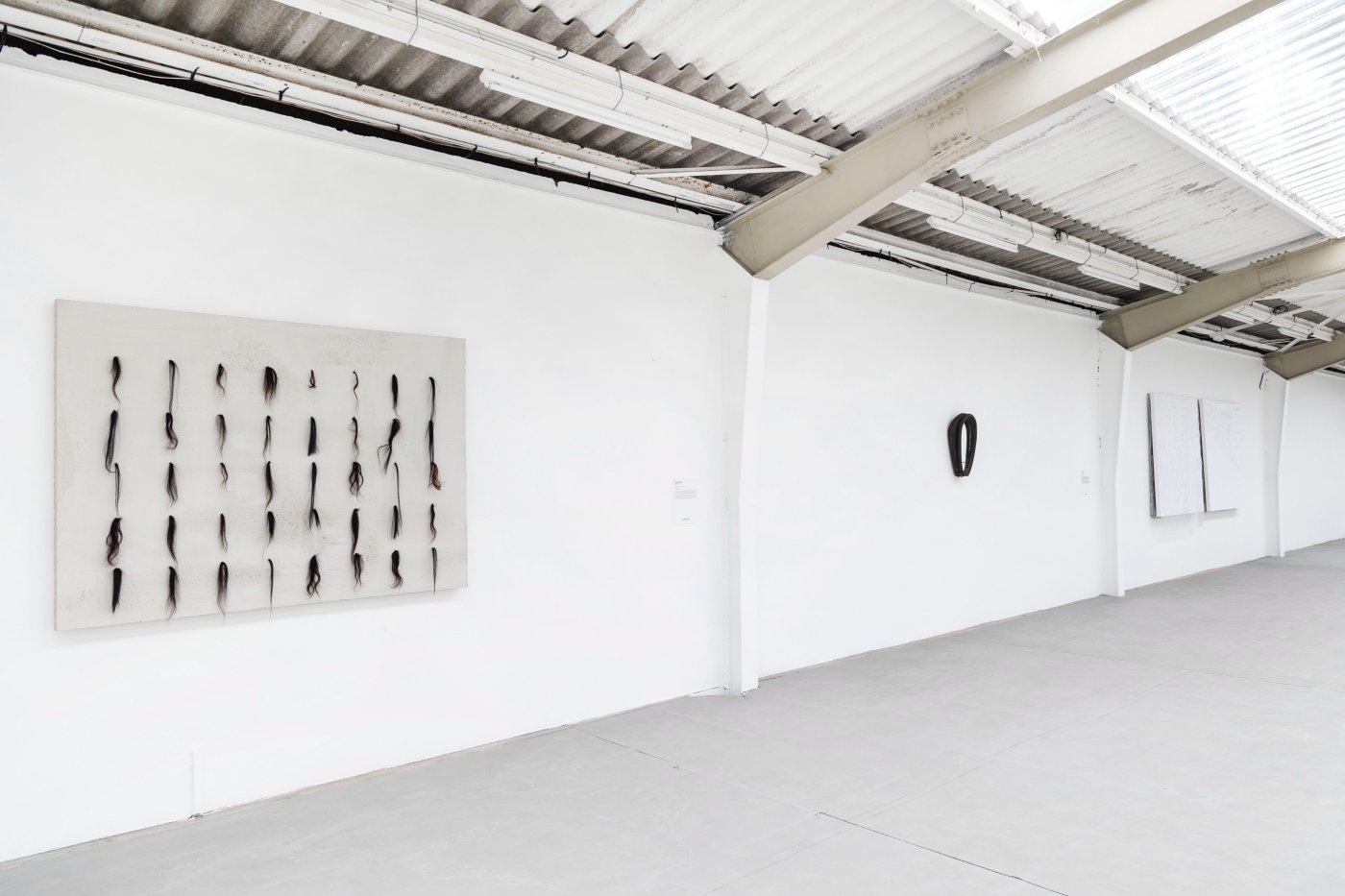
For his new solo exhibition bride on soil, Sislej Xhafa presents an entirely new series of works, engaging into a poetic dialogue with the imposing architectural space of the paper factory where GALLERIA CONTINUA / Les Moulins has been located since 2007.
Sislej Xhafa’s works question the place of the individual in the society, shining a light on the strategies of resistance that are put in place as a survival mechanism in our everyday life. The works diffuse a sense of poetry, an irony that pervades the objects put on display suggesting ways to cope with the world and contemporary issues of society. Xhafa plays with irony and utopia, exploring with a minimal language, and through a wide variety of media, themes that range from war to migration, from love to death.
His poetry stems from objects that are recovered from his surroundings and his environment. Born in 1970 in Pejë, Kosovo, Xhafa lived in London and Italy before moving to New York. Although his artistic experience has been marked by important institutional milestones - his work has been presented at the Venice Biennale in 1999, 2005, 2013 and 2017, and at Manifesta in 2000 and 2022 - Sislej Xhafa’s practice is marked by daily life, by the streets from which most of his inspiration comes from, in his nomadic existence as a self-proclaimed stray dog. It is for this reason that every single one of his works bears a clear trace of his passage in the streets of New York, Kosovo, or Italy as a young immigrant in the 1990s.
The show bride on soil should similarly be interpreted as a journey, which leads the visitor through the rooms of this ancient factory transformed into an exhibition space. As we enter the building, we are first faced with under one thumb, two second-hand shoes, one for men and one for women, a possible metaphor for the two halves of a married couple, connected by guitar strings poetically suggesting harmony in the relationship. The installation resonates with the bridal component introduced by the artist in the title.
Walking around the first wall, we are then confronted with SISTER VALLEY, the pivotal installation of the exhibition. An impressive gathering of quiet radiators welcomes us to the main room of the space, inviting us to observe a contemplative silence towards them, a solemn (and rather absurd) respect for these inanimate objects. As we wander around the broken heaters, we become aware of the rust that covers them, scars caused by time. We notice the fresh flowers hidden under each of them, a gentle gesture of remembrance, a hint on the delicacy and fragility of nature.
The imprint of time is also a main aspect in Sislej Xhafa’s Concetto in Exile series: huge tarpaulins that once covered the cargo of a truck, traveling for thousands of kilometers under the sun, the wind, the rain. They have since interrupted their journey: framed and hanged on a wall, they are now a monument to displacement as a survival mechanism, a monument sculpted and eroded by the elements.
Leaving SISTER VALLEY, the rest of the space presents other works, everyday objects that are assembled creating new unexpected paths. A solitary framed picture stands on a wreath holder: it is the portrait of a nameless priest, recovered by the artist on the streets of New York and titled AMORE. The priest has peppers coming out of his mouth, red and hot like a lover’s passion; he is turned into an object of veneration, set on a stand used in funerals and focal element of a monthly ritual in which the peppers are removed and replaced. The pepper is at the same time a natural element that connects us to the earth, and serves as a prelude for IRON QUILT, where the soil evoked in the title makes itself evident. The work is comprised of a tool linked to farming and agriculture: a horse collar, attached to the animal when it pulls the plough. In the middle of the collar, a mirror reflects the image of the viewer, engaging the visitor and questioning their position, as well as our shared common experience as humans, born from the same land despite the distance that can separate our birthplaces. Man and its conflictual relationship with urban reality is portrayed in Red: a canvas covered with cement trying to suffocate an organic, human component, which sprouts regardless in the form of hair from underneath the surface. Broken dream plays on the symbolism of the basketball, a quintessential American icon, putting it on display destroyed and unusable, filled with coal.
In Sugar sky, an element of childhood is transformed into a dangerous hybrid: a jumping rope where the string has been replaced with barbed wire, introducing images of war and violence into the playfulness of the original object. BLUE TONGUE also introduces a peculiar dialogue and assemblage between a military helmet and a pair of women’s tights, opening a poetic reflection on love and the humanity of a soldier.
Countervailing the feminine elements shown or alluded to in some of the works in the exhibition, the artist presents us with blue shelter, a long blue hose with a prominent element of masculinity emerging from one end. The artist’s irony transpires and spreads from the entirety of his practice. We notice it when we are confronted with works such as blue shelter or Toothpick, a small toothpick made out of terracotta that lays in the center of an oversized, almost empty pedestal. The aptly named work would seem to be a reminder (not without irony) to appreciate small details of daily life.
Sislej Xhafa has exhibited widely, including recently at Manifesta 14, Prishtina, Kosovo; MOCAK Museum of Contemporary Art in Krakow, Poland; GAMeC Galleria d’Arte Moderna e Contemporanea, Bergamo, Italy (2022); bleta, permanent public work, Tirana, Albania (2021); MAXXI Museum, Rome, Italy (2020); Art Basel UNLIMITED, Basel, Switzerland (2019); MAXXI Museum, Rome, Italy; National Fine Arts Museum of Havana, Cuba (2018); ZAC, Palermo, Italy (2017); MAXXI Museum, Rome, Italy (2016); François Pinault Foundation, Palazzo Grassi, Venice, Italy; Hardau City Park, Y, Zurich, Switzerland; MADRE Museum of Contemporary Art Donna Regina, Napoli, Italy; The Power Plant Contemporary Art Gallery, Toronto, Canada (2011); PRISM Misericordia, West Hollywood, California, USA; MAXXI Spazio, Rome, Italy; Röda Sten, Göteborg, Sweden (2010), MART Rovereto Museo di Arte Moderna e Contemporanea di Trento e Rovereto, Italy; PAC Padiglione d’Arte Contemporanea, Milan, Italy; DEPO, Istanbul, Turkey; MADRE Museum of Contemporary Art Donna Regina, Napoli, Italy (2009); Havana Biennial, Cuba; Modern Art Oxford, UK; Biennale of Gwangju, South Korea; MOCAD Museum of Contemporary Art of Detroit, USA; Schirn Kunsthalle, Frankfurt, Germany (2008); Istanbul Museum Of Modern Art, Turkey; Göteborg International Biennial for Contemporary Art, Sweden; Mori Art Museum, Tokyo, Japan (2007); PERFORMA05, performance biennial, New York, USA (2005); I Bienal de Arte Contemporáneo de Sevilla, Spain; The Renaissance Society, Chicago, USA; Museum of Contemporary Art, St.Louis, USA; Tate Modern, London, UK; Stedelijk Museum, Amsterdam, Netherlands; North Dakota Museum of Art, Grand Forks, USA; Fundació ‘la Caixa’ la Sala Montcada, Barcelona, Spain; Haifa Museum of Art, Israel (2004), Palais de Tokyo, Paris, France (2003), Gwangju Biennial, South Korea (2002); Istanbul Biennial, Turkey; S.M.A.K., Gent, Belgium; PS1, New York, USA (2001); Manifesta III, Ljubljana, Slovenia; S.M.A.K., Gent, Belgium (2000); Fondazione Olivetti, Rome, Italy (2000) and the Venice Biennale (1997,1999, 2005, 2013, 2017).
Galleria Continua a le plaisir de présenter la troisième exposition de Sislej Xhafa à GALLERIA CONTINUA / Les Moulins, à l’occasion du quinzième anniversaire de la galerie.
Pour sa nouvelle exposition personnelle bride on soil, Sislej Xhafa présente une nouvelle série d’œuvres qui nourrissent un dialogue poétique avec le vaste espace de l’ancienne papeterie dans laquelle GALLERIA CONTINUA / Les Moulins est implantée depuis 2007.
Les œuvres de Sislej Xhafa interrogent la place de l’individu dans la société, mettant en lumière les stratégies de résistance que nous développons comme autant de mécanismes de survie au quotidien. L’ironie et la poésie émanant de ses œuvres procèdent du choix des objets exposés, qui permettent à cet art de nous confronter à notre rapport au monde et aux enjeux de la société d’aujourd’hui. Xhafa fait appel à l’ironie et à l’utopie pour aborder une grande variété de thèmes – la guerre, la migration, l’amour, la mort – avec un langage simple.
La poésie de son œuvre découle des pérégrinations de l’artiste dont ces objets portent la trace. Né en 1970 à Pejë, au Kosovo, Xhafa a vécu à Londres et en Italie avant de s’installer à New York. Si son travail a bénéficié d’une importante reconnaissance institutionnelle – son œuvre a été présentée à la Biennale de Venise en 1999, 2005, 2014 et 2017, ainsi qu’à Manifesta en 2000 et 2022 – la pratique artistique de Sislej Xhafa reste ancrée dans la vie quotidienne, au milieu des rues où il trouve souvent son inspiration. L’œuvre se confond ainsi avec cette existence nomade de « chien errant », comme il la définit lui-même. Chacun de ses travaux devient le témoin de ses errances urbaines, qu’il s’agisse de celles de New York, du Kosovo ou de l’Italie, où il a immigré dans les années 1990.
L’exposition bride on soil se conçoit également comme une déambulation ; celle-ci mène le visiteur à travers les espaces de cette ancienne usine devenue lieu d’exposition. En entrant dans le bâtiment, nous sommes accueillis par under one thumb: une chaussure d’homme et une chaussure de femme, possibles métaphores des deux moitiés d’un couple, se trouvent reliées par des cordes de guitare, suggérant une harmonie en construction. L’installation introduit ici le thème de la mariée (bride) que l’artiste place dans le titre de son exposition.
En longeant le premier mur, nous découvrons ensuite SISTER VALLEY, installation centrale de l’exposition. Ce rassemblement de radiateurs silencieux nous accueille dans la pièce principale, invitant à observer un silence de recueillement et un respect solennel qui tend à l’absurde envers ces objets inanimés. Déambulant parmi ces chauffages hors d’usage, nous commençons à prêter attention à la rouille qui les recouvre et à la patine du temps. On repère ensuite que sous chacun d’eux se cache une fleur, geste sensible de deuil, évocation de la délicatesse et de la précarité du vivant.
Après SISTER VALLEY, on aperçoit dans le même espace de nouvelles œuvres dans lesquelles la juxtaposition d’objets du quotidien produit des constellations insoupçonnées. Un portrait solitaire pend à un crochet qui sert habituellement à maintenir les couronnes de deuil sur les stèles. Cette peinture représentant un prêtre a été trouvée par l’artiste dans les rues de New York et intégrée à cette installation intitulée AMORE. Des piments rouges sortent de la bouche du prêtre ; de passeur du culte, il devient lui-même objet de culte, installé sur un support employé lors des enterrements. Les piments doivent être renouvelés chaque mois, redoublant la dimension rituelle de cette œuvre. Le piment, fruit de la terre, nous offre un point de liaison avec IRON QUILT, où le rapport au sol joue un rôle déterminant. L’œuvre nous fait voir un instrument lié à l’agriculture : un collier d’épaule, pièce primordiale de l’attelage du cheval à la charrue. Placé au centre de ce collier, un miroir renvoie l’image des visiteurs, les poussant à interroger leur propre position, et au-delà, notre expérience commune d’êtres humains, issus d’un seul et même sol – en dépit de la distance qui peut séparer deux lieux de naissance. L’homme et sa relation conflictuelle à la réalité urbaine sont au centre de Red, une toile recouverte de ciment, qui semble vouloir asphyxier la composante organique et humaine (le cheveu) qui continue néanmoins sa prolifération, parvenant à se frayer un chemin jusqu’à la surface. Broken dream joue quant à elle sur la symbolique du ballon de basket, objet américain par excellence ; celui-ci nous est présenté rempli de charbon et dégradé, ainsi inadapté au jeu.
Dans Sugar sky, un objet appartenant à l’univers de l’enfance subit une monstrueuse hybridation : la ficelle de la corde à sauter s’est vue remplacer par du barbelé, provoquant un télescopage entre le registre de la guerre et de la violence et l’innocence de ce jouet. BLUE TONGUE présente également une rencontre fortuite entre un casque militaire et une paire de collants pour femme, dont le rapprochement semble nous inviter à méditer sur l’amour et l’humanité du soldat.
Contrepartie des éléments féminins présentés ou suggérés dans d’autres œuvres de l’exposition, l’artiste nous met sous les yeux blue shelter, un long tuyau bleu dont, par une extrémité, s’échappe un détail anatomique masculin. L’ironie de l’artiste qui filtre ici imprègne l’ensemble de sa pratique. Des œuvres comme blue shelter ou Toothpick – un cure-dent à dimension réelle réalisé en terre cuite, installé au centre d’un socle qui semble presque vide – en portent témoignage. Cette œuvre au titre très factuel a été créée au cours d’une résidence d’artiste en Italie et elle semble nous inciter (non sans ironie) à apprécier les petits détails de la vie quotidienne.
L’œuvre de Sislej Xhafa a fait l’objet de nombreuses expositions, parmi lesquelles récemment Manifesta 14, Pristina, Kosovo; MOCAK, Musée d’art contemporain de Cracovie, Pologne; GAMec Galerie d’art moderne et contemporain, Bergame Italie (2022); bleta, œuvre publique permanente, Tirana, Albanie (2021); Musée MAXXI, Rome, Italie (2020); Art Basel UNLIMITED, Bâle, Suisse (2019), Musée MAXXI, Rome, Italie; Musée national des beaux-arts de la Havane, Cuba (2018); ZAC, Palerme, Italie (2017); Musée MAXXI, Rome, Italie (2016); Fondation François Pinault, Palazzo Grassi, Venise, Italie (2017); Hardau City Park, Y, Zurich, Suisse; MADRE Musée d’art contemporain Donna Regina, Naples, Italie; The Power Plant Contemporary Art Gallery, Toronto, Canada (2011), PRISM Misericordia, West Hollywood, Californie, États-Unis; MAXXI Spazio, Rome, Italie; Röda Sten, Göteborg, Suède (2010), MART, Rovereto Musée d’art moderne et contemporain de Trento et Rovereto, Italie; PAC, Pavillion d’art contemporain, Milan, Italie; DEPO, Istanbul, Turquie; MADRE Musée d’art contemporain Donna Regina, Naples, Italie (2009); Biennale de la Havane, Cuba; Modern Art Oxford, Royaume-Uni; Biennale de Gwangju, Corée du Sud; MOCAD, Musée d’art contemporain de Detroit, États-Unis; Schirn Kunsthalle, Francfort, Allemagne (2008); Musée d’art moderne d’Istanbul, Turquie; Biennale internationale d’art contemporain de Göteborg, Suède; Mori Art Museum, Tokyo, Japon (2007); PERFORMA05, biennale de performance, New York (2005); I Biennale d’art contemporain de Séville, Espagne; The Renaissance Society, Chicago, États-Unis; Musée d’art contemporain de St. Louis, États-Unis; Tate Modern, Londres, Royaume-Uni; Musée Stedelijk, Amsterdam, Pays-Bas; Musée d’Art du North Dakota, Grand Forks, États-Unis, Fondation ‘la Caixa’ la Sala Montcada, Barcelone, Espagne; Musée d’art de Haïfa, Israël (2004), Palais de Tokyo, Paris, France (2003); Biennale de Gwangju, Corée du Sud (2002); Biennale d’Istanbul, Turquie; S.M.A.K, Gand, Belgique; PS1, New York, USA (2001); Manifesta III, Ljubjana, Slovénie; S.M.A.K, Gand, Belgique (2000); Fondation Olivetti, Rome, Italie (2000) ainsi que la Biennale de Venise (1997, 1999, 2005, 2013, 2017). Sislej Xhafa - bride on soil. Exhibition view Galleria Continua / Les Moulins, France. Photo: Allison Borgo
